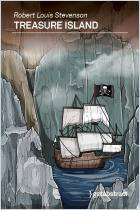
Strange Case of Dr Jekyll and Mr Hyde
- Gothic fiction
- Victorian literature
What It’s About
The Duality of Man
In Strange Case of Dr Jekyll and Mr Hyde, Robert Louis Stevenson presents a story both fantastical and familiar. While you may not possess a mysterious potion that allows you to transform into another identity, most people compartmentalize aspects of their personality to some degree and must battle against their darker urges. Published in 1886, Strange Case of Dr Jekyll and Mr Hyde begins as an amateur detective novel but ends as a powerful critic on the dangers of repressing aspects of one’s personality. The book gained international acclaim both for the excitement that the suspenseful tale offers and the moral message it contains; it was even used in sermons of the day. Written in a poetic yet factual style, Jekyll and Hyde depicts the horrifying violence of which man’s inner evil is capable when unleashed. In doing so, it turns a mirror to its readers, inviting them to consider all aspects of their own nature.
Summary
About the Author
Robert Louis Stevenson was born on November 13, 1850, in Edinburgh. As a result of illnesses throughout his childhood, he didn’t attend school regularly until 1864, but he enjoyed hearing and writing stories from a young age. In 1867, Stevenson enrolled in the University of Edinburgh; though he studied law, he abandoned the field shortly after graduation and devoted himself to writing essays for magazines. In 1876, he met a married but separated American magazine writer named Fanny Van de Grift. He became her lover, though she soon returned to America. In 1879, he learned of Van de Grift’s impending divorce and traveled to California to meet her. The couple married one year later, and Stevenson became stepfather to her two children. From the late 1870s onward, Stevenson suffered from lung disease and remained an invalid for most of his life. In an attempt to find a setting that would improve his health, the family traveled extensively throughout Britain and America; despite his illness, Stevenson wrote essays and stories. When Treasure Island (previously serialized under a pseudonym) was published as a novel in November 1883, it met with huge success. In 1884, he published A Child’s Garden of Verses, his compendium of poems for children. With the publication of Strange Case of Dr Jekyll and Mr Hyde in 1886, Stevenson gained fame in America as well as in England. When his health worsened in the late 1880s, the Stevensons undertook two years of cruises throughout the Pacific. In 1890, Stevenson purchased a plantation and built a house in Vailima, Samoa. He became involved in Samoan politics and drew attention to the incompetence of some European colonial officials, resulting in their dismissal. On December 3, 1894, Stevenson died of a cerebral hemorrhage at the age of 44 and was buried on Mount Vaea. Over the course of his life, Stevenson wrote 13 novels (two uncompleted at the time of his death), six short story collections, four collections of poetry, seven autobiographical tales of his travels and more than 60 essays.











Comment on this summary or Start Discussion